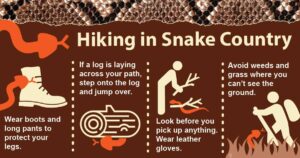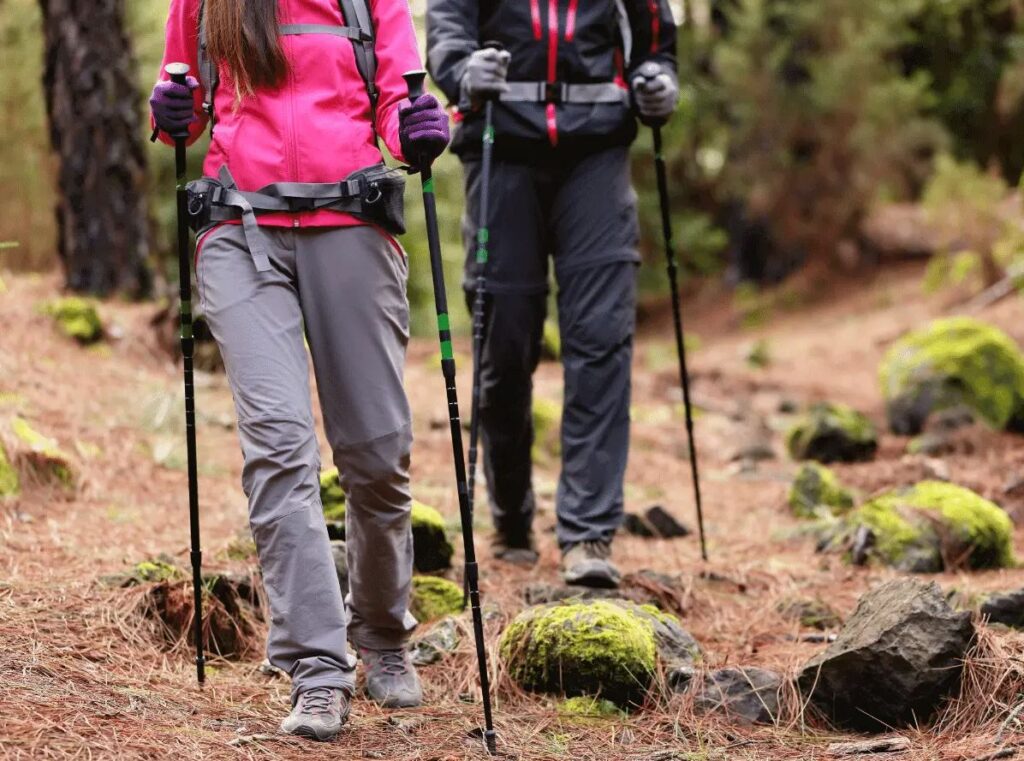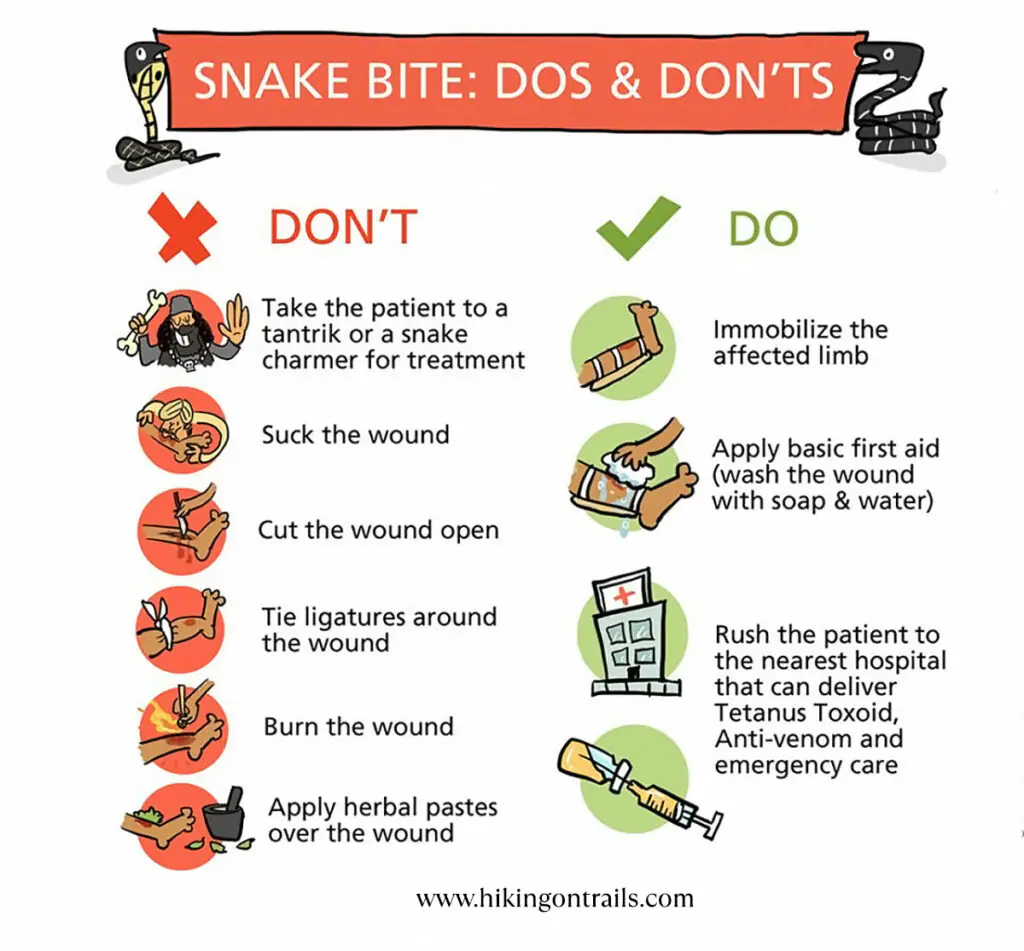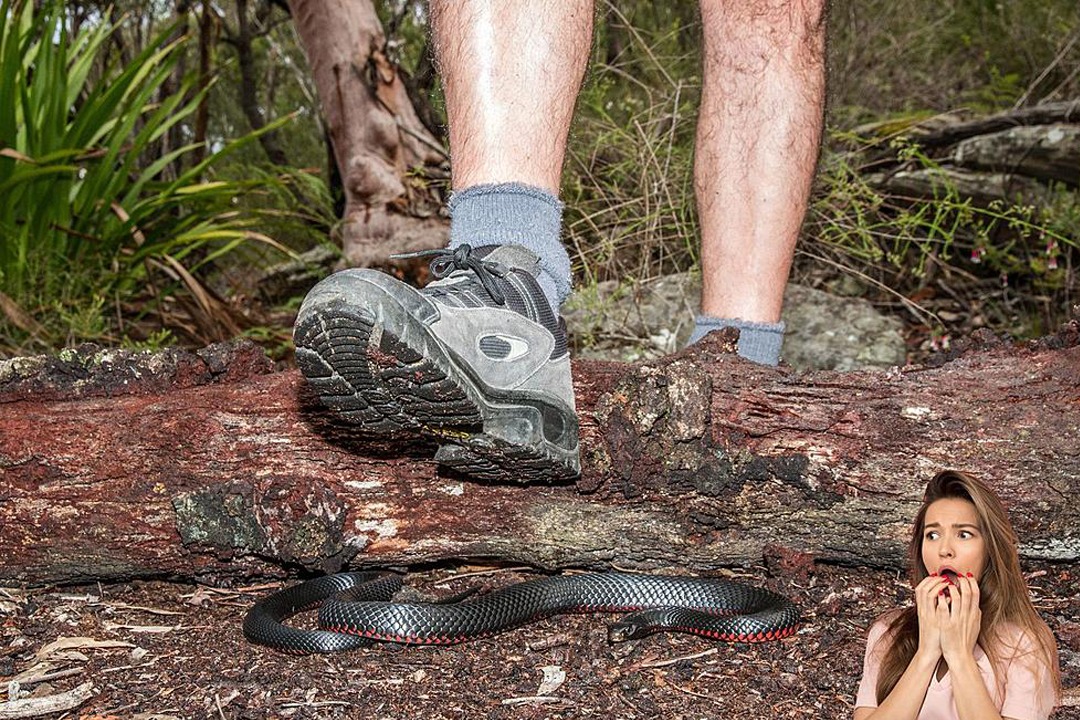Introduction
Snakes are an integral part of the natural ecosystem, and most encounters with them occur without any issues. However, some species can be venomous and pose a potential risk to hikers.
By following these guidelines, you can reduce the likelihood of encountering snakes and know how to respond if you do come across one.


Educate Yourself About Local Snake Species
Before embarking on your hiking trip, research the local snake species in the area you’ll be exploring.
Familiarize yourself with the appearance and behavior of venomous snakes common to the region. Understanding the snakes’ habits will help you recognize potential danger and avoid risky situations.
Stay on Established Trails
Stick to well-marked and established hiking trails. Snakes are less likely to be found on well-traveled paths as they tend to avoid areas with frequent human activity.
Avoid wandering off the trail, especially in areas with dense vegetation or rocky crevices where snakes might seek shelter.
Make Noise While Hiking
Snakes are sensitive to vibrations and will often retreat when they detect human presence.

Make noise while hiking by talking, clapping, or using a bell attached to your backpack. This alerts snakes to your presence, giving them time to move away before you approach.
Avoid Tall Grass and Underbrush
Steer clear of tall grass, bushes, and underbrush, as these are common hiding spots for snakes. Stick to the center of the trail and avoid stepping over rocks or logs where snakes might be resting or seeking shade.
Use Hiking Poles or Sticks
Carrying hiking poles or sticks can serve two purposes: providing stability on uneven terrain and alerting snakes to your presence.

Tap the ground ahead of you with your poles or sticks to create vibrations that signal your approach.
Watch Where You Step
Be vigilant about where you place your feet while hiking.
Take slow, deliberate steps, and scan the ground in front of you for any signs of snakes. Avoid stepping into areas with poor visibility, such as tall grass or rocky outcroppings.
Avoid Hiking Alone
Whenever possible, hike with a group or a hiking buddy. Hiking in a group not only enhances the overall experience but also reduces the risk of a surprise snake encounter.
If you must hike alone, make sure to inform someone about your hiking plans and estimated return time.
Wear Appropriate Clothing and Footwear
Wear long pants and sturdy hiking boots that cover your ankles while hiking. This attire not only protects you from potential snake bites but also helps prevent scratches and insect bites.

Avoid wearing sandals or flip-flops while hiking, as they leave your feet vulnerable to bites and injuries.
Be Cautious Around Water Sources
Snakes are often found near water sources, such as streams, ponds, or lakes. Exercise extra caution when approaching these areas.
Be mindful of rocks and logs near the water’s edge, as snakes may use them for basking or hunting.
Respect Snakes and Their Habitat
Remember that snakes are an essential part of the ecosystem and have their place in the natural world. Avoid disturbing snakes or trying to handle them.
If you encounter a snake, give it plenty of space and allow it to move away without causing any harm.
What to Do If You Encounter a Snake
If you encounter a snake while hiking, remain calm and follow these steps:
- Stop and give the snake ample space.
- Do not approach the snake or attempt to handle it.
- Back away slowly and quietly to allow the snake to retreat.
- If the snake is on the trail, consider finding an alternative route to continue your hike.

Conclusion
By educating yourself about local snake species, staying on established trails, making noise while hiking, avoiding tall grass and underbrush, and using hiking poles or sticks, you can greatly reduce the likelihood of encountering snakes while hiking. Remember to be cautious around water sources and always wear appropriate clothing and footwear for protection. Hiking with others and respecting snakes and their habitat are crucial components of a safe and enjoyable hiking experience. With these precautions in mind, you can confidently explore nature, appreciate the beauty of the outdoors, and minimize the chances of a snake encounter during your hiking adventures.
